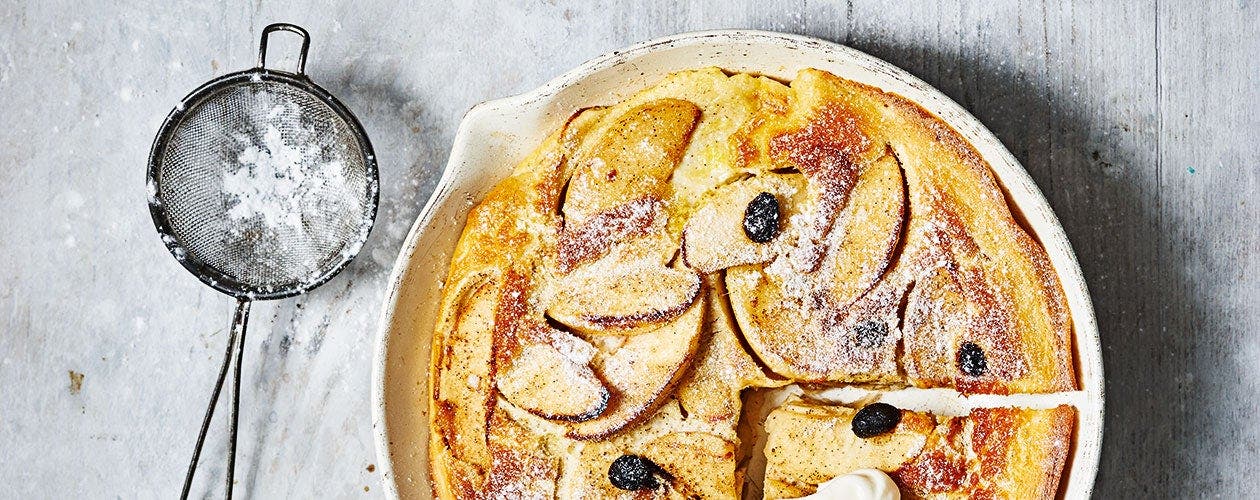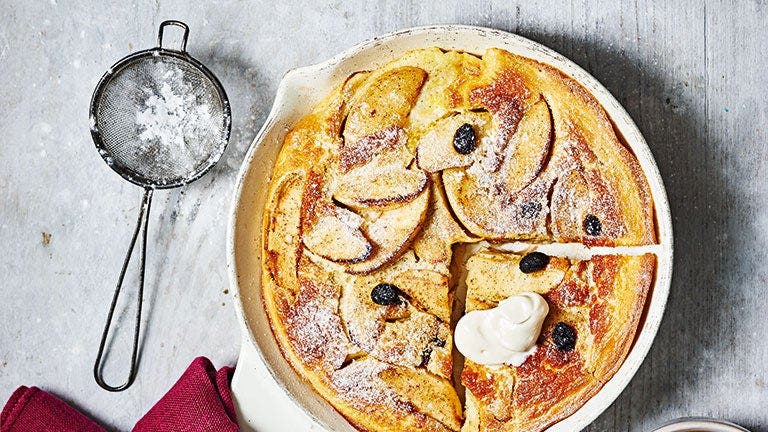Going out for German food this Oktoberfest? 5 tips to stay on track


Looking forward to a Bavarian dish this Oktoberfest?
Follow these menu tips to enjoy a delicious, hearty German meal without going off plan.
1. Plan your carbs carefully
“Before you take your first bite, pick your poison,” says Sarah Krieger, MPH, RD, spokesperson for the Academy of Nutrition and Dietetics (and former resident of Germany). “There are pretzels, bread, dumplings, and dough coming at you. If you’d rather have the dessert, you need to focus on the prize and pass on the earlier temptations,” she says.
2. Go for whole-grain rye
While bread varieties have a similar Points® value, they’re not always nutritional equals. Opt for the whole-grain rye breads, including dark, dense pumpernickel. Unlike nutritionally void white bread, these breads contain fibre, helping you feel full.
3. Choose cold over hot
Many German sides, including potato salad, sauerkraut and red cabbage, can be served both hot and cold. Always opt for the cold, advises Krieger. “Anything hot will have oil, bacon grease, or other fat,” she says. This is harder to pull off with cold sides because cold grease and oil are much more apparent (and much less appetising).
4. Spread some love
When it comes to toppings for your bread, potato pancakes or sandwich, choose mustard. “Whether it’s spicy, smooth, or grainy, take advantage of mustard,” says Krieger. A tablespoon of Dijon mustard is 1SP, a teaspoon of French mustard is up to 1SP (check the WW app for exact values) and a teaspoon of wholegrain mustard is also up to 1SP.
5. Banish the salt shaker
“With cured vegetables and meats, you can pretty much bank on a high-sodium meal,” says Krieger. You can’t eliminate the high sodium of sauerkraut or sausages, but it's best to avoid adding any extra. Excessive salt consumption has been shown to have an adverse effect on blood pressure and cardiovascular health, and there are also possible links to weight gain.
Your guide to German sausages
Bratwurst...is a grilled or pan-fried pale pork & beef sausage blended with mild spices, often including garlic, marjoram or nutmeg.
Weisswurst...is boiled in water and has a smooth consistency from finely ground veal and pork, plus milk and eggs.
Knackwurst (knockwurst)...is a slightly smoked all-beef or beef-pork combo.
Wienerwurst (saitenwurst)...looks like a smallish, long skinny hot dog.
Chicken bratwurst...is a far better choice than traditional pork, with a typically lower Points value.
Krainerwurst...is a smoked bratwurst that’s slightly smaller than the basic bratwurst.
Glossary
Flammkuchen: A German pizza.
Kartoffelpuffer: Potato pancakes.
Laugenbrezel: A large Bavarian pretzel.
Rösti: Large grated-potato pancake (originated in Switzerland).
Rouladen: A dish of thin-sliced beef rolled with bacon, onion, and dill pickle.
Sauerbraten: Beef roast braised with vinegar.
Schinken: Specialty ham.
Speck: Bacon or bacon fat.
Wurst: Cured meats, usually a sausage. There are many varieties.
